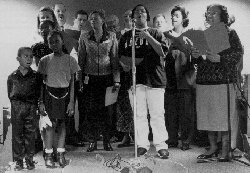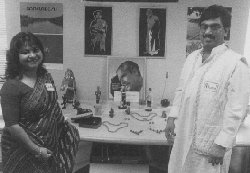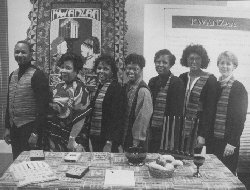In recent years, MSD has been recognized as a community leader in providing opportunities for women and members of minority groups — both in employment and in contracting opportunities. Beginning in the late 1980s, business, women’s and minority organizations have repeatedly recognized the agency for its efforts in equal opportunity and affirmative action.

MSD Photo by Martin E. Biemer
It was not always so. When MSD was formed, Louisville was firmly segregated, and employers were only beginning to re-think old ideas about the proper places for blacks and women in the workforce. Most of the black employees at MSD were laborers; most of the women were clerks and secretaries.
The situation began to change in the 1970s. MSD began drafting its affirmative action plan in 1977, and adopted it in May, 1978 after more than eight months of discussion.
At the time, MSD had 593 employees. The 74 blacks and 89 women were mostly in "traditional" occupations.
The plan committed MSD to hiring more women and members of minority groups, and said that contractors and vendors doing business with MSD should also have affirmative action plans.
There was some progress in the next four years. The proportion of blacks in MSD’s workforce increased from 12.5 percent in 1978 to 17.4 percent in 1982; the proportion of women increased from 15 percent to 19 percent.
In 1984 the effort was expanded and intensified. A full-time affirmative action officer was appointed; new goals were set for the proportions of blacks and women in the workforce; and a new program was begun to award MSD contracts to businesses owned by women and members of minority groups.

MSD Photo by Martin E. Biemer
The expanded program brought results. In 1996, the proportion of blacks in MSD’s workforce was more than 29 percent, and the proportion of women was more than 25 percent. Blacks and women held jobs at all levels, from top management to entry level and clerical. There were more handicapped employees and members of other minority groups, as well.
MSD awarded nearly $88 million in contracts to outside companies, firms and individuals in the 1995-1996 fiscal year. Of this, more than $13.6 million — or more than 15.5 percent — went to companies owned by members of minority groups, and more than $4.9 million — or more than 5.6 percent — went to companies owned by women.

MSD Photo by Martin E. Biemer
MSD expanded its efforts again in 1995 by creating a workforce diversity council to improve relations and communications among the many different cultures in the organization and throughout the community. One of the council’s major efforts is the annual Holiday Cultural Extravaganza, held each December to highlight the customs and foods of many different cultures.
Organizations recognizing MSD for its efforts in this area include the American Public Works Association, the Kentucky Federation of Business and Professional Women, the Louisville Minority Business Development Center and Minority Enterprise Development Council, and the National Council of Negro Women.
MSD History continued - The Flood of 1997


